By John Previsich, SMART TD President, and Dennis Pierce, BLET National President
On Thursday, May 23, 2019, we were informed that the Federal Railroad Administration (FRA) had released a notice, withdrawing a 2016 notice of proposed rulemaking establishing a minimum train crew size for most rail freight operations in the United States. This news was not surprising.
What is shocking, however, is the degree to which FRA has chosen to subordinate the safety of BLET and SMART TD members, other railroad workers, and the American public to the interests of the nation’s major railroads.
FRA’s reference to current crew sizes, which have existed for decades, as mere “crew redundancy” displays an astonishing ignorance of the findings of the agency’s own research studies, which establish — in detail and beyond dispute — the unique and specific duties of each crewmember.
FRA also disappointingly engages in self-serving fact selection in its attempts to negate the importance of the 2013 Lac-Mégantic tragedy and the Casselton, North Dakota, oil train derailment — and subsequent explosion and fire — to the crew size debate. And it simply ignores several subsequent accidents where a two-person crew saved the public from an even more horrific outcome.
In its rush to diminish the safety impact of common-sense crew size regulations, FRA also points to various regulations requiring risk analyses and the adoption of risk reduction plans by railroads. While our Organizations fully support such plans, we note that Congress mandated regulations governing these subjects more than a decade ago, but they have yet to be promulgated because of industry recalcitrance and obstructionism.
Also, the argument that two-person crews have not been proven safer — because of FRA’s failure to collect crew size data — while the data support a conclusion that single-person crews are not demonstrably less safe is mystifying in its logic, to be charitable.
Moreover, the federal rail safety regulator hints that there is no “specific requirement that would prohibit autonomous technology from operating a locomotive or train” in the absence of any human crewmember whatsoever as a means of “reducing accidents caused by human error.” If the ongoing grounding of the Boeing MAX aircraft has taught nothing else, FRA and the Department of Transportation should be mindful of the danger of transferring the risk of a human factors accident from operator to programmer when autonomous technology is implemented. For this reason, FRA’s declared “support [for] the integration and implementation of new automation technologies” on the nation’s locomotives should give everyone pause.
Lastly, the Agency’s invocation of the negative preemption doctrine is incredible. Both the industry and the Agency reject prescriptive safety regulations as a philosophical matter, because they supposedly require a “one size fits all” approach; indeed, this was part of the industry’s argument against the proposed rule.
In stark contrast to this philosophy, FRA’s invocation of negative preemption seeks to promulgate a prescriptive prohibition, regardless of the implications of its action on federalism. In so doing, the valid safety concerns expressed by supporters of the proposed rule such as National League of Cities — representing more than 19,000 cities, villages, and towns — and the Western Organization of Resource Councils are dismissed out of hand.
We frankly did not expect this Administration to complete this rulemaking, but we did afford the new Federal Railroad Administrator a fair opportunity to demonstrate that safety was his primary objective. Given the scope of this withdrawal, the Administrator has clearly failed the test, because he has placed corporate profits above public safety. Railroad safety has taken a giant step backward today, but our Organizations do not intend to let this development go unchallenged.
###
The SMART Transportation Division is comprised of approximately 125,000 active and retired members of the former United Transportation Union, who work in a variety of crafts in the transportation industry.
The Brotherhood of Locomotive Engineers and Trainmen represents over 57,500 professional locomotive engineers and trainmen throughout the United States. The BLET is the founding member of the Rail Conference, International Brotherhood of Teamsters.
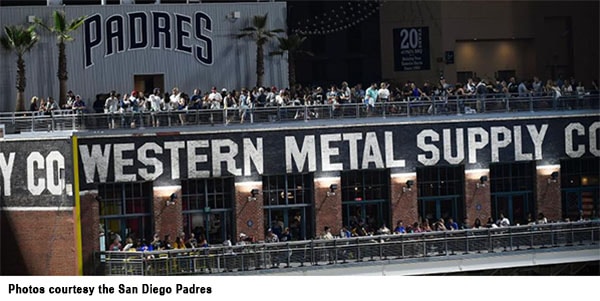
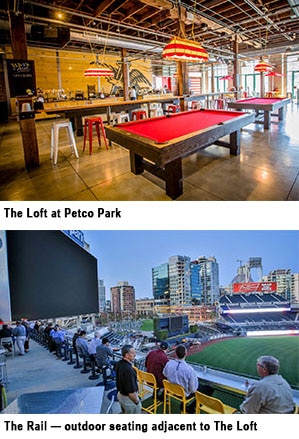 Food, fun and baseball will be the name of the game as registered meeting attendees watch the Padres take on the National League West rival San Francisco Giants at the Padres’ home field, a short walk from the host Hilton Bayfront Hotel.
Food, fun and baseball will be the name of the game as registered meeting attendees watch the Padres take on the National League West rival San Francisco Giants at the Padres’ home field, a short walk from the host Hilton Bayfront Hotel.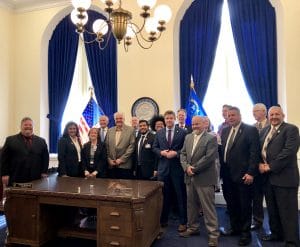
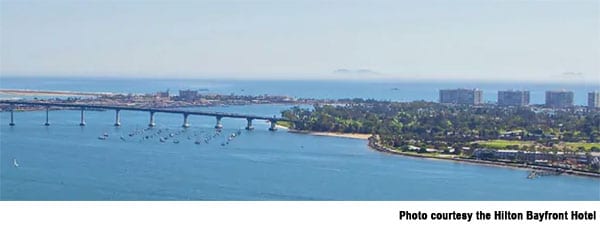 A pair of tours has been finalized on June 30 and July 1 for attendees of the
A pair of tours has been finalized on June 30 and July 1 for attendees of the  Day 1 (June 30): High Spirits Hornblower yacht luncheon/tour: Attendees will be picked up at the hotel dock at 9:45 a.m. to enjoy sightseeing on San Diego Bay with a professionally narrated harbor tour. More than 50 historic landmarks are covered by the 13-mile Big Bay cruise. Attendees will enjoy lunch on board and see marine animals and majestic sea birds on High Spirits, which was originally constructed as a sister ship to President Franklin D. Roosevelt’s presidential yacht, the Sequoia. Attendees will arrive back at the dock at 1 p.m., giving them time to spare to visit Seaport Village, which is within walking distance, before the Regional Meeting’s opening reception Sunday evening.
Day 1 (June 30): High Spirits Hornblower yacht luncheon/tour: Attendees will be picked up at the hotel dock at 9:45 a.m. to enjoy sightseeing on San Diego Bay with a professionally narrated harbor tour. More than 50 historic landmarks are covered by the 13-mile Big Bay cruise. Attendees will enjoy lunch on board and see marine animals and majestic sea birds on High Spirits, which was originally constructed as a sister ship to President Franklin D. Roosevelt’s presidential yacht, the Sequoia. Attendees will arrive back at the dock at 1 p.m., giving them time to spare to visit Seaport Village, which is within walking distance, before the Regional Meeting’s opening reception Sunday evening.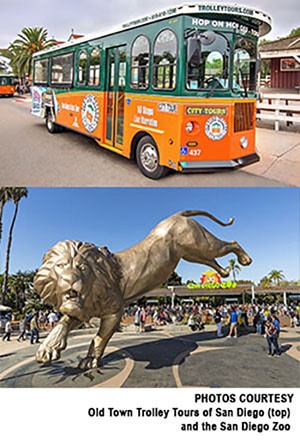 Day 2 (July 1): Old Time Trolley ride and visit to the San Diego Zoo: Attendees will take a trolley from the Hilton Bayfront Hotel at 8:45 a.m. and travel to the world-renowned San Diego Zoo, home to thousands of exotic animals. Guided bus tours of the 100-acre zoo will allow visitors the chance to encounter the zoo’s more than 3,500 rare and endangered animals representing more than 650 species and subspecies and its prominent botanical collection with more than 700,000 exotic plants. A slate of wildlife shows and an airborne shortcut over the treetops will give visitors an unforgettable experience as they encounter the zoo’s animal and plant collection and surrounding Balboa Park. Lunch vouchers provided on the tour will allow attendees to customize their visit to their interests, and the tour group will return to the hotel at about 3:30 p.m.
Day 2 (July 1): Old Time Trolley ride and visit to the San Diego Zoo: Attendees will take a trolley from the Hilton Bayfront Hotel at 8:45 a.m. and travel to the world-renowned San Diego Zoo, home to thousands of exotic animals. Guided bus tours of the 100-acre zoo will allow visitors the chance to encounter the zoo’s more than 3,500 rare and endangered animals representing more than 650 species and subspecies and its prominent botanical collection with more than 700,000 exotic plants. A slate of wildlife shows and an airborne shortcut over the treetops will give visitors an unforgettable experience as they encounter the zoo’s animal and plant collection and surrounding Balboa Park. Lunch vouchers provided on the tour will allow attendees to customize their visit to their interests, and the tour group will return to the hotel at about 3:30 p.m. WASHINGTON
WASHINGTON